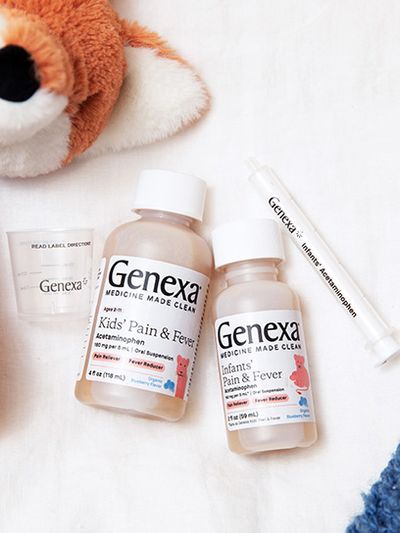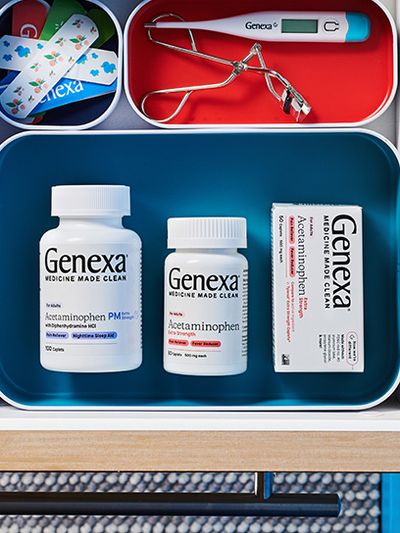How To Use Saline Nasal Spray
Saline Nasal Spray: The Complete Breakdown
Table of contents:
If you’re experiencing symptoms of nasal congestion, no matter what the cause of your discomfort, you want it gone fast. Medicated nasal sprays can cause some side effects that may be less than ideal, but saline nasal spray offers a natural option that can help you feel better and breathe more easily with a very low risk of side effects.
Here’s how to use saline nasal spray and how it can help you.
Saline Nasal Spray Overview
There are three main categories of nasal sprays available to people who are suffering from nasal congestion: saline nasal spray, decongestant nasal spray, and steroid nasal spray.
Saline nasal sprays are natural solutions that do not contain any medication and are made of salt water. No prescription is required for saline nasal sprays, which can be purchased over the counter or online and can also be made at home.
When you experience nasal congestion, it is common to have mucus build up in the nasal passages, making it difficult to breathe. Saline nasal sprays help to loosen and dissolve the mucus in the nasal passages and also help to prevent additional inflammation from occurring by providing moisture and preventing the nasal passages from drying out. This mechanism is based on providing an osmotic gradient.
Because saline nasal sprays do not contain any medication and include only a simple salt water solution, there is no limit on the frequency with which they can be used. Saline nasal spray can be especially useful for children who are too young to blow their nose or who have difficulty blowing their nose, since nasal congestion in children is common and saline nasal spray can be used frequently.
Decongestant nasal sprays can be purchased both over the counter and by prescription depending on their strength and the type of medication they contain. Decongestants use medications to help narrow the blood vessels that line the inside of the nose, which reduces inflammation in the surrounding tissues. As inflammation decreases, congestion is also reduced. Decongestant nasal sprays can be very helpful for severe congestion, but they shouldn’t be used for more than three days in a row, as they can produce a “rebound effect” that results in experiencing even worse congestion. Decongestants can also be purchased in the form of a pill.
Steroid nasal sprays can also be purchased either over the counter or with a prescription depending on the medication. Steroid nasal sprays are most often prescribed for the treatment of allergy symptoms, but they can also provide relief from congestion that results from sinus infections and similar illnesses. Steroid nasal sprays work by reducing inflammation in the tissue of the nasal passages. For pregnant patients, budesonide nasal spray is a secondary option if saline sprays are deemed to be ineffective.
Conditions Commonly Treated with Saline Nasal Spray
Saline nasal sprays are commonly used to provide relief for a number of different types of nasal issues with little to no risk due to their lack of medication. Saline nasal sprays are unable to treat the root cause of symptoms associated with different types of congestion, but they may help provide relief for certain symptoms.
Saline nasal sprays are commonly used to help relieve symptoms associated with the following conditions:
- Relief of general nasal congestion and dryness
- Relief of symptoms caused by respiratory allergies
- When breathing cold or dry air that can dry out the nasal passages
- Relief of symptoms caused by hay fever
- Following nasal surgery that leaves the nasal passages feeling dry or crusty
- Relief of symptoms caused by upper respiratory infections such as colds or sinusitis
- Prior to using an inhaler medication
- Prior to using nasal steroid sprays
- Prior to using medicated allergy nasal sprays
How Saline Nasal Spray Works
Saline nasal sprays may help to improve symptoms caused by nasal congestion in several different ways.
First, saline nasal sprays can help to keep you healthier by washing out germs like allergens, irritants, and viruses from the nasal passages before they can cause an immune response in the body.
Second, saline nasal sprays can help make medicated nasal sprays more effective when the saline spray is used first because they add moisture to the nasal passages. Moisture in your nasal passages is key to ensuring that they can help effectively absorb and use the medication in the medicated spray.
Third, saline nasal sprays help keep the lining of the nasal passages clean and hydrated, which helps your body maintain a strong immune response to any type of nasal germs.
Finally, saline nasal sprays may provide relief by helping to thin and loosen excess mucus in the nasal passages and sinus cavity, helping to minimize symptoms of nasal and sinus congestion and feelings of discomfort.
How To Use Saline Nasal Spray
Because saline nasal sprays don’t contain medication, using them is very simple. Even children are able to effectively use saline nasal spray on their own.
The first step in how to use saline nasal spray is to blow your nose first, if possible, in order to remove as much mucus as you can prior to using the spray. Some people, including children, may not be able to blow their nose, but that’s ok. The second step to use saline nasal spray is to remove the cap from the bottle and follow any instructions on the label to get the spray ready for use, such as pumping or priming the spray.
Once the saline nasal spray is ready for use, press one finger lightly against the outside of one nostril to close off the nostril. Next, place the saline nasal spray bottle underneath your open nostril and position your thumb underneath the bottom of the spray bottle. Next, squeeze the spray bottle as you inhale to breathe the saline solution into your nostrils. Repeat if indicated on the directions, then switch sides. Remember to spray pointed towards the corresponding ear. Rinse the bottle tip with hot water and wipe with a towel after each use.
While you might feel like blowing your nose or sneezing after using the spray, try to avoid it if possible to allow the saline solution time to work on loosening and thinning mucus before blowing your nose to relieve congestion.
How Much Saline Nasal Spray You Should Use
Saline nasal spray does not contain any medication, so there’s lower risk of using too much of the spray. However, the guidelines for use do vary depending on the reason that the medication is being used. People who are using saline nasal spray to moisten the nasal passages prior to administering nasal steroid spray will generally use one spray per nostril prior to using the steroid spray; steroid sprays may be used between two and six times per day, depending on their instructions.
When saline nasal spray is used to relieve nasal congestion or dryness, the instructions of most saline nasal sprays indicate that people can use two sprays per nostril as needed throughout the day.
Other Treatment Options for Congestion
Saline nasal sprays can be helpful in relieving discomfort associated with nasal congestion, but they may not be enough to relieve symptoms associated with severe congestion. If you are experiencing nasal congestion and have been using saline nasal spray without any improvement for several days, a decongestant nasal spray or antihistamine nasal spray may be able to help.
Decongestant nasal sprays are most commonly used to treat nasal or sinus congestion. These nasal sprays work by decreasing the amount of swelling occurring in the nasal passages, which lowers pressure and improves air flow. As a result, patients are able to breathe more easily and feel relief from their congestion.
While decongestants can be very effective, they can make your congestion worse when used for more than three days at a time. Decongestants may make you feel more awake and alert, so they shouldn’t be used at night.
Antihistamine nasal sprays are primarily used to help relieve drainage associated with allergies, including symptoms like a runny nose, postnasal drip, or itchy, watery eyes. Antihistamines work by preventing the action of a chemical produced by the immune system known as histamine.
When the immune system detects the presence of an allergen, it starts to produce histamine, which causes symptoms like an itchy, runny nose or eyes and swelling of the nasal passages. Antihistamine nasal sprays won’t help to treat congestion caused by a cold, they can still be useful for treating congestion in many situations. Antihistamine nasal sprays may make you feel tired or drowsy, so they should be used at night until you know how the medicine affects you.
Summary
To use saline nasal spray, blow your nose first, if possible, and then close off one nostril while spraying the solution into the other. Repeat if directed and then switch to the other side. Saline nasal sprays can be used as often as needed to help reduce symptoms of nasal congestion, as they do not contain medication and cause very few side effects.






